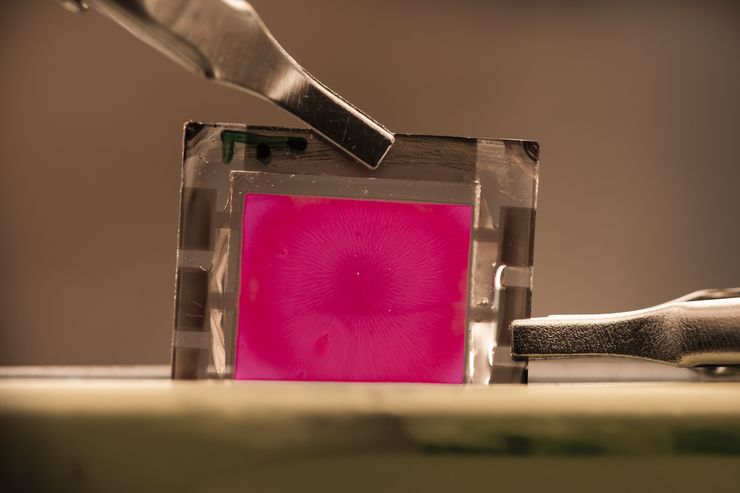An international research team has developed near-infrared (NIR) LED based on perovskite in a laboratory at Linköping University in Sweden which achieve a record external quantum efficiency of 21.6 percent
Perovskites have good light-emitting properties and are easy to manufacture. However, the external quantum efficiency of perovskite-based LED has until now been limited due to defects that arise in the material during manufacture. The defects act as traps for the charge carriers and thus cause energy losses.

(Image: Linköping University)
To solve the issue of material defects, researchers added “passiviation molecules”, which bind to the atoms that cause defects. Although they learned from previously discovery that a molecule with amino groups at its ends gave a certain improvement in properties, the researchers found the effect increased dramatically when they selected a molecule that also contained oxygen atoms.
The molecule they found has two amino groups at its ends, with oxygen atoms at suitable distances between them. Oxygen atoms reduce the hydrogen bonding ability of amino groups, and hence increase the probability that they interact with defects. The number of traps for charge carriers in the perovskite is significantly reduced, allowing the charge carriers to recombine and emit light efficiently.
“This particular perovskite material gives highly efficient LED in the near-infrared region. Near-infrared LED are particularly useful for medical and telecommunication applications. We believe that our new findings can also be applied to perovskite light-emitting diodes with other colors”, said Feng Gao, senior lecturer in the Division of Biomolecular and Organic Electronics at Linköping University.
The external quantum efficiency is a record-high 21.6 percent.
The work is led by LiU scientist Feng Gao, in close collaboration with colleagues in China, Italy, Singapore and Switzerland. The results have been published in Nature Photonics.





 CN
TW
EN
CN
TW
EN






